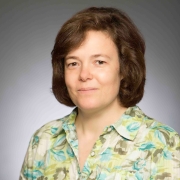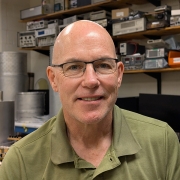Chemists Develop Motion Capture-like Technology for Tracking Protein Shape
In many modern animated movies, the trick to achieving realistic movements for individual characters and objects lies in motion-capture technology. This process often involves someone wearing a tracking suit covered in small, colored balls while a camera captures the position of those colored balls, which is then used to represent how the person is moving.
Researchers are developing a similar technology to obtain atomic-resolution “movies” that track how proteins fold and change shape. To generate these movies, the scientists label the protein with probes at many positions and observe the movement of those labels. The fluorescence data on the relative positions of the probes can then be used to construct computational models of the protein structure in atomic detail. This research could lead to improvements in drugs used to treat neurodegenerative diseases, as well as new methods of imaging that could lead to their earlier detection.
The research was multi-disciplinary effort led by E. James Petersson, an associate professor of chemistry, and graduate student Jack Ferrie. Elizabeth Rhoades and Zahra Fakhraai, both associate professors of chemistry, as well as Abhinav Nath of the University of Washington, Seattle; Penn undergraduate Jimin Yoon; postdoctoral fellow Conor Haney; and graduate students Buyan Pan and Yi-Chih Lin also contributed to the study. The paper was published in Biophysical Journal.
“One of the big fundamental questions in biochemistry is how proteins fold into a certain shape,” says Petersson, “and this is dictated by the sequence of amino acids in the protein. The information in all of the interactions of the amino acid side chains somehow leads to it folding into a proper shape.”the drug, allow the protein to change shape, make fluorescence measurements and then take those back to the computational modeling so we can actually see the structural effect of these drugs. Hopefully this will lead to more of a rational understanding so that better second and third generation drugs can be made.”
Click here to read the full story.





